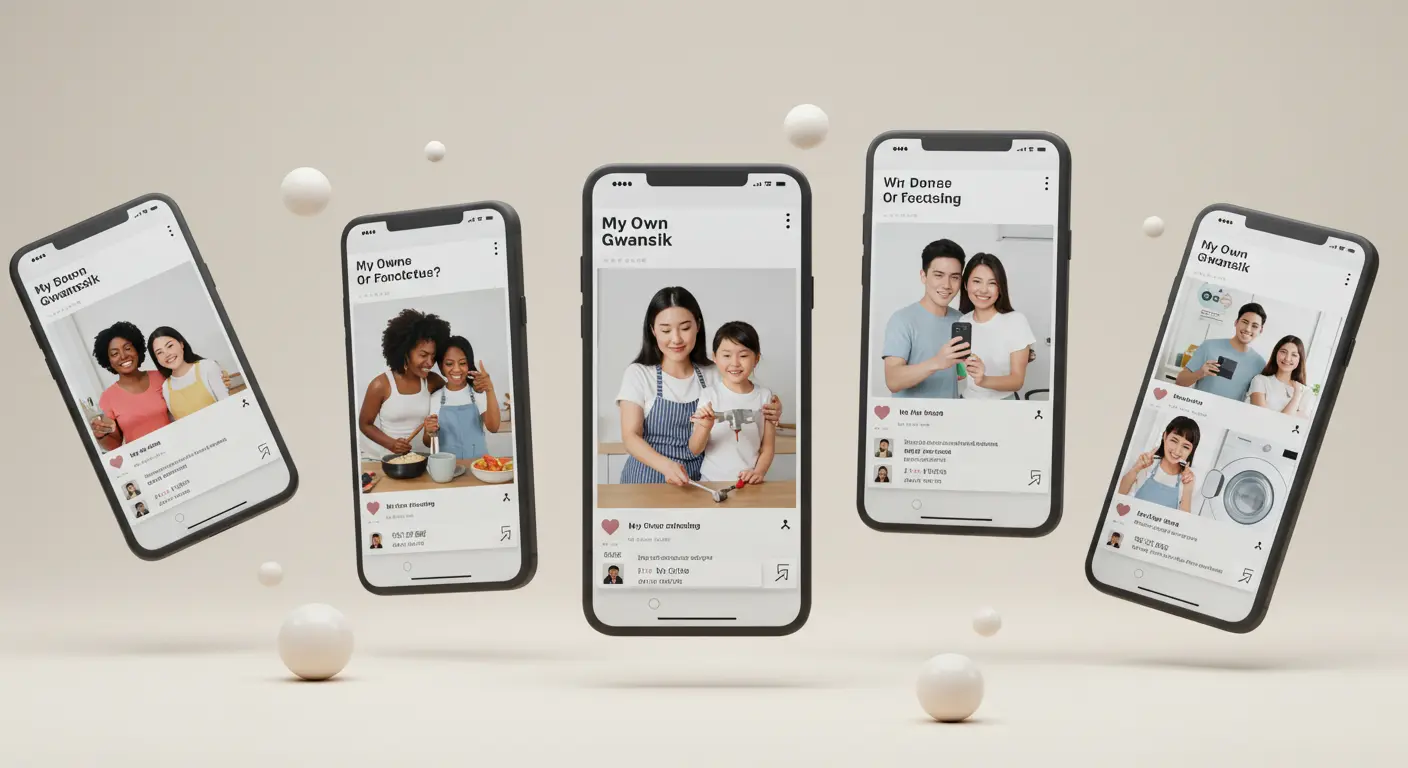Bottom line: The Netflix drama “Fooled by the Bomb,” which has exploded in 42 countries around the world, has become more than just a K-drama, it’s created a new language phenomenon.
Born out of the “My Own Gwansik” meme that went viral on international social media, “Gwan-sik-ness” – a Korean term for unconditional devotion and silent love – broke new ground in Korean emotional expression.
With an IMDb rating of 9.3 and 5.5 million cumulative views, how did this drama transcend language barriers and capture hearts around the world?

1. The Birth and Meaning of Kansans
“Gwan-sik-ness” is a neologism derived from Yang Kwan-sik, the male protagonist of the Netflix drama “Bewitched,” which exploded in popularity overseas after the show ended in March 2025. The phrase refers to devotion, unconditional love, and silent sacrifice.
1. The character Kwan Sik is set on Jeju Island in the 1960s and plays the role of Soon Aebo, a man who looks out for the heroine Ae Soon-man.
2. It shows you’re a steadfast lover who will go out of their way for your partner no matter what.
3. They are the epitome of the “green flag” masculine and are perceived as an idealized figure that is unlikely to exist in real life.
2. ‘My Own Gwansik’ international meme phenomenon
The phrase “my own Gwansik” has caught on among international audiences, and it’s become a trend to write it on photos of your husband or boyfriend doing something for you on social media – a new global meme phenomenon created by K-dramas.

1. Attach the phrase “My Own Gwansik” to a photo of your husband painting the ceiling or fixing a doorknob.
2. Capture and share moments when you’re tending to your kids or helping around the house.
3. Comments like, “Every woman needs her own guanxi,” and “I hope to find one someday.
3. Learn Korean emotions from K-dramas
K-dramas are an effective teaching and learning resource for learning real-life emotional expressions that are used in everyday life. The phenomenon of “Kwan-sik-nis” helps you understand the subtle emotional nuances of the Korean language.
1. **Dedication: to devote oneself to someone or something at the expense of oneself.
2. **Ilpyeondansim (일편단심): A true heart that is consistent and unchanging
3. **Blunt: words or actions are unfriendly and cold
4. **Extreme sincerity (지극정성)**: Extreme sincerity beyond measure.
4. Korean culture reflected in KwanSikNis
More than just a romance, “Kwan Shik-nis” is about family and responsibility in traditional Korean society. This drama is not just a romance, but a masterpiece that truly expresses family love, and the writer is praised for how well he wrote every single line.
1. **The male figure in a patriarchal society: The silent breadwinner who takes care of the family.
2. **Culture of affection: deep affection that doesn’t need words to be expressed
3. **Patience and waiting: building love over time rather than instant gratification
5. Global Korean learning trends
In 2024, the number of students taking Korean language classes increased by 491 TP3T over the past year as the popularity of Korean culture surged around the world. K-dramas are becoming a major driver of Korean language learning.

1. 46% of students learning Korean choose “hobbies” as their main reason for learning.
2. The Korean language learning market size is projected to grow from $7.2 billion in 2024 to $25.11 TP3T by 2034, at a CAGR of 25.11%.
3. The Sejong Academy Foundation has released 40 learning contents utilizing Korean Wave content such as K-dramas and K-pop.
6. Frequently asked questions (FAQ)
Q1. What’s the difference between the “Gwansikness” and “My Own Gwansik” memes?
A1. “Gwansiknis” is a Korean neologism meaning the character or behavior of a gwansik, and “My Own Gwansik” is a meme expression used abroad to refer to a devoted man.
Q2. How to learn Korean effectively with K-dramas?
A2. It is important to repeatedly learn vocabulary and expressions commonly used by real Koreans through dialogues of different age groups in dramas and understand the cultural context together.
Q3. Why is “Fooled by the Bomb” so popular overseas?
A3. Because the Jeju dialect and Korean sentiment spoke to the world, and as the series progressed, the word of mouth grew and the series reached the Netflix Top 10 charts in 42 countries.
Q4. Why are customs characters called “green flags”?
A4. because they represent an idealized version of masculinity that is rarely present in the real world and model healthy, positive relationships through unconditional love and commitment.
7. references
1. ‘It’s all over the place’: Overseas dietary epidemic – MyDaily
2. Netflix drama Bombshell Fooled: Global No. 1 and Overseas Reaction Analysis – ZDNet Korea
3. Global Korean Language Learning Market Trends and Growth Rate to 2025 – GM Insights
8. related reading
1. 7 Key Korean Expressions to Learn with K-Pop Demon Hunters | 2025 Latest2. A Complete Guide to the 2025 TOPIK Test Schedule | A Recap of the New Speaking and IBT Expansion
3. The Secret to the $67 Billion Korean Language Learning Market: K-pop’s Global Education Revolution
4. Korean Learning App Comparison: Duolingo vs TalkToMeInKorean, Who Wins the 15 Million Download Battle?
5. The Complete Guide to King Sejong Institute’s Free Korean Language Training: Chosen by 250,000 People in 85 Countries
